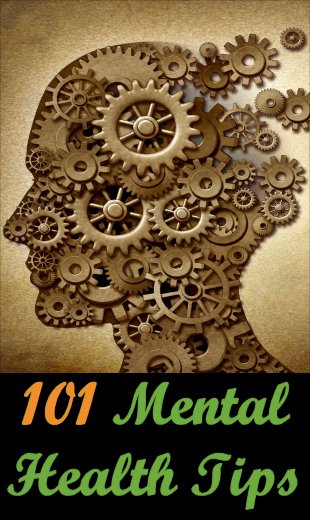35 Tactics To Help Stave Off An Urge To Self-Harm
The statistics regarding self-harming activities are, quite frankly, shocking. As at the time of writing this article, in the USA:
- 20% of females and 13% of males have engaged in it at some point.
- Nine out of ten of these people start self-harming during the pre-adolescent / teenage years, with 14 being the most common age to begin.
- Around half of them have been sexually abused.
- Over two million cases per year are reported.
In other countries, such as Singapore, it is reported that as many as one in three young adults self-harm frequently.
There are many forms of self-harm, including:
- Breaking bones
- Burning
- Carving designs or words into their skin
- Causing bruises
- Cutting
- Hair pulling
- Hitting / punching either themselves or other objects
- Interfering with natural healing processes (e.g. by picking scabs off or even reopening wounds)
- Pinching their skin
- Puncturing the skin (and inserting objects in it)
- Ripping skin
- Rubbing substances into the skin (e.g. broken glass)
- Scratching their skin (e.g. until it bleeds)
Self-harm frequently occurs with other mental health problems too, such as anxiety, depression, eating disorders, and substance abuse.
Clearly, anybody who is self-harming needs professional help, but your therapist cannot be with you 24 x 7, which is why people who feel compelled to do this to themselves need a few tactics they can call on when needed that will mitigate that desire or need to harm themselves.
This article offers a few suggestions that may help, but again, they are NOT intended as a substitute for medical help.
Controlled Breathing Exercises
I’ve talked about the benefits of these many times in other articles, and that’s because they work – they can help you relax and calm you down, as well as helping you get to sleep if that’s a problem for you.
There are many different versions of this exercise, but essentially, they all involve breathing in (preferably through your nose, if that’s possible) while you count to a specific number (e.g. six), and then exhaling (through your nose or mouth) while you count to a specific number, which may be the same or different to the first number.
Crafting
Any type of crafting (e.g. sewing, knitting, painting, crochet, macramé, origami, stencilling, pottery) can provide enough of a distraction so that you do not self-harm.
Cry
There’s nothing wrong with having a good cry, if that’s what you need.
It’s actually been shown to reduce stress, and can help you self-soothe.
Doodle
Yes, get out a piece of paper or colouring book and a set of coloured pens or markers, and unleash your creativity.
Maybe you can also use different colours to represent the different emotions that you are feeling right now (e.g. red for anger, blue for sadness).
This is a simpler version of what’s known as art therapy, and it works in part because of the many benefits of being creative.
Draw On Your Skin With A Washable Marker
Instead of harming yourself, you can draw or doodle something on your skin, which provides a similar sensation – but without the damage.
Just make sure the marker you use is washable!
Eat Comfort Food
While eating food you enjoy can be helpful at reducing stress and improving your mood, there are two caveats to this tip:
- It’s probably not a wise idea if you are also suffering from some type of eating disorder.
- Many comfort foods are not always particularly healthy, so try not to overdo it.
One self-harmer reported that eating spicy food (e.g. hot peppers) helped them – but obviously do not do this if you cannot tolerate that type of food.
Eat Sour Food
This can provide a physical distraction that takes your mind off hurting yourself.
You could suck on a lemon, say (or eat / drink anything with a strong lemon flavour, such as lemon juice or squash, lemon curd).
Other options including drinking a bit of apple cider vinegar (which is reported as having a load of health benefits too), gooseberries, Greek yoghourt (or any unsweetened variety), kefir or kombucha (which are fermented probiotic drinks), kimchi (which is a Korean fermented dish), kumquats, limes, mustard greens, rhubarb, sauerkraut (which is a German fermented dish), tamarind, and tart cherry juice.
Games And Puzzles
Games that require some level of thought, rather than pure chance games, are better, because they engage the mind more, but any game can help.
On the puzzle front, choices include anagrams, crossword puzzles, jigsaws, Nonograms, Sudoku, and word search puzzles, but there are many more options out there, of course.
Go For A Drive
This is obviously ONLY if you’re in a fit state to do so, but assuming you are, driving safely requires your full attention, which means you will be less focused on yourself and your desire to cause harm.
Have A Soak In A Warm Bath
This is one of the best forms of self-soothing – it’s relaxing, comforting, and cozy.
I used to combine this with some of the other tips, such as reading a book while snacking on some comfort food. 🙂
If this is not practical (e.g. you’re at work), then even washing a part of your body (e.g. your arms) can be almost as beneficial.
Household Chores
Yes, some people find it helpful to wash the dishes, or iron clothes, or other jobs that are somewhat repetitive.
The key is to immerse yourself in the activity, rather than doing the chore on autopilot. So, focus all of your attention on every aspect of what you’re doing, and use as many senses as you can, in order to best provide the distraction you need.
Hug Somebody
There is nothing like a hug (unless, of course, you have something like Sensory Processing Disorder where physical contact is difficult for you) to make you feel better.
So, make sure the person you hug is OK with it and expecting it.
And if necessary, the “somebody” might be a pet or even an inanimate object (e.g. a teddy bear) instead of a human.
Listen To Upbeat Music
People often harm themselves when they are feeling sad and down – but it’s difficult to remain sad when you’re listening to some of your favourite upbeat music.
So, create a playlist (e.g. on YouTube, Spotify) of music / songs that you find uplifting, and listen to them whenever you feel the urge to self-harm.
Check out this list of music that cheers me up.
Mindfulness Exercises
This is a great way to help you focus on what’s around you, rather than on you (and your need to self-harm).
All you need to do is look around you and see how many items of a certain type you can find. For example, things that are red, objects that are round, furniture with legs.
If you’re out and about, you can also look for other people wearing certain colours of clothes, or people with dogs, or certain colours or makes of cars, or people riding motorbikes or bicycles.
And it’s not restricted to sight either – you can also try to listen for different sounds, or even see how many different smells and aromas you can detect.
Pet Your Pet
I’ve already talked in another article about the benefits of adopting a dog when you are depressed, but about one in five self-harmers have reported that playing with a pet (or other animal) is a valuable coping strategy.
Physical Activity
I hesitate to call this exercise, because it doesn’t need to go that far.
Simply standing up and walking around the house will do.
If you have a pet, then you could take him or her for a walk, and kills two birds with one stone.
Of course, if you want to do something that you could call exercise (e.g. going for a walk, or a short cycle ride, or even going to the gym), then that’s fine too – it just doesn’t need to be that strenuous.
Play Games
Specifically, computer or video games, because they are as close to being 100% engaging as you will ever find.
And if you’re busy in some shoot-em-up action game, for example, you’re not thinking about hurting yourself (in the real word).
Pop Some Bubble Wrap
If you have some to hand, try popping those little air pockets in some bubble wrap.
This activity is oddly addictive and soothing.
Read A Book
Depending on the book, this can be a great way to distract yourself.
You could choose a fiction book (e.g. a romance or action thriller), something funny, or even a non-fiction book if reading it engages you mind.
Since I studied German at school, I used to take a fiction book written in German with me to dental appointments, because the effort it took to understand the story was enough to eliminate the anxiety I felt.
Shred Some Paper
This technique, which is also good for when you’re depressed, requires you to find a piece of paper (e.g. regular writing paper, bathroom tissue, or even plastic wrap) and tear it into as many tiny pieces as you can (which you should then dispose of responsibly and safely, of course, especially in the case of plastic wrap).
Sing
Bursting into song (depending on your situation, of course) can be another great way to redirect your thoughts and energy away from self-harm and toward something distracting and fun.
Still, as with the music tip earlier, it’s better to go with something upbeat.
Snuggle Up
There is something very soothing about being snuggled up in a blanket, but it doesn’t have to be a blanket.
It might be an item of clothing you find comforting, for example, or, if you have one, a weighted blanket (which simulates being hugged).
Spend Time Outdoors
Over and above the benefit of physical activity (see above), there are two more benefits of this tip:
- Many (maybe most) Americans are deficient in vitamin D, and the best natural source of it is daylight. Vitamin D is one of many vital vitamins and minerals that contribute to good health – both physical and mental.
- Being out in nature is good for us – it reconnects us with our origins, and takes us away from the highly polluted and chaotic life we have built for ourselves in the large cities.
So, even if you go to the local park and sit there, either reading or listening to music, or simply people-watching, it’s going to help take you mind off wanting to self-harm.
Squeeze An Ice Cube
This idea replaces actual physical harm with something that is uncomfortable, but rarely dangerous. Squeezing an ice cube between your fingers until they start to tingle will become uncomfortable very quickly, but it won’t cause anything like the sort of harm that, say, cutting yourself will.
Take It Out On A Pillow
Instead of hurting yourself, go get your pillow and:
- Cry into it.
- Hit it.
- Punch it.
- Scream into it.
This way, you can vent your anger or stress on an inanimate object instead of on yourself.
Take Online Quizzes
There are tons of these quizzes to take, both serious ones (e.g. DiSC, Enneagrams, Myers-Briggs) and fun ones (e.g. which type of potato are you, or which Star Trek character are you most like).
The serious ones may tell you something useful about yourself you didn’t already know, and the less serious ones are obviously not to be taken seriously.
However, either type is a great way to lose yourself for a few minutes (or hours – these things can become addictive).
Talk To A Friend
Catching up with a friend, particularly one you’ve not seen or spoken to for a while, can be a valuable distraction.
This doesn’t mean you need to tell your friend about how you’re feeling. Instead, ask them about their life, listen to what they say, and then ask follow-up questions to keep the conversation going.
The Rubber Band Trick
This idea is fairly well known, and, like many good ideas, it’s simple.
All you need to do is wear a rubber band (or hair tie) around your wrist, and then when you feel the urge to harm yourself, you simply stretch the band and let is snap back against your wrist.
The slight sting of the rubber band hitting your skin can be enough, in some cases, to suppress the need to hurt yourself.
However, be warned – in some people, it can make that urge greater. So, try it for yourself and see whether it works.
Tidy Up
Another way to provide yourself with a distraction is to tidy up your room. For example, empty the wastebasket / trash can, or put stuff away.
If none of that needs doing, rearrange things on your shelves (e.g. books, CDs), or try to create some space by moving things around.
It doesn’t necessarily matter what you do – only that you divert your energy to doing something.
Use An App
There are smartphone apps specifically designed to help people with self-harming urges, so look for one that works for you and is available on your type of phone.
Watch Some Comedy
Similar to the idea of listening to upbeat music, it’s hard to remain down when you’re laughing, and watching (or listening) to something you find very funny is a great way to take your mind of harming yourself.
You could grab a DVD, find something on Netflix or Hulu, say, or create a playlist on YouTube of amusing clips.
Wait
If you feel the need to cut yourself, for example, then try to wait for 20 minutes.
If you can manage that, you’ll often find your urge has disappeared – especially if you use those 20 minutes to try some of the other tips in this article.
Weigh The Pros And Cons
Some people find it helpful to write down the advantages and disadvantages of harming themselves.
When you see it there, in black and white, it’s easier to come to the realization that harming yourself is not in your best interests.
Worry Stones
These are usually smallish (about half the size of a silver dollar), polished (usually naturally by water over a long time), and many have a thumb-sized indentation in them too.
The idea is that you hold the stone between your fingers and thumb, and gently caress it, which can reduce stress and which is another form of self-soothing.
Alternatives would be any small object you can carry with you (preferably smooth, to avoid injury) and then hold in your hand, including stress balls.
Write
I’ve already mentioned, above, about the benefits of creativity, so you could do some creative writing – maybe a poem about how you feel, or a short story.
Alternatively, you could try journalling, which has also been shown to be beneficial to people with mental health problems.
And remember, whatever you write need not be shared with anybody else – the simple act of putting how you feel down on paper (either on real paper, in a diary or journal, or on virtual paper in a document on your computer or phone) can be very therapeutic (which is something I touch on in this article).
Conclusion
It should go without saying that the above tips:
- May not work for everybody.
- May not work in all situations.
- Will probably not permanently eliminate your urge to harm yourself.
- Are not a replacement for seeking appropriate help from a trained medical professional.
That being said, one or more of them may at least help you not self-harm right now, and every time you resist the urge is better for you in the long run.
Additional Resources
These are suggestions for those who wish to delve deeper into any of the above:
- Calming App
- DiSC Test
- Enneagrams Test
- Find A Therapist (US only)
- Myers-Briggs Test
- Weighted Blankets







